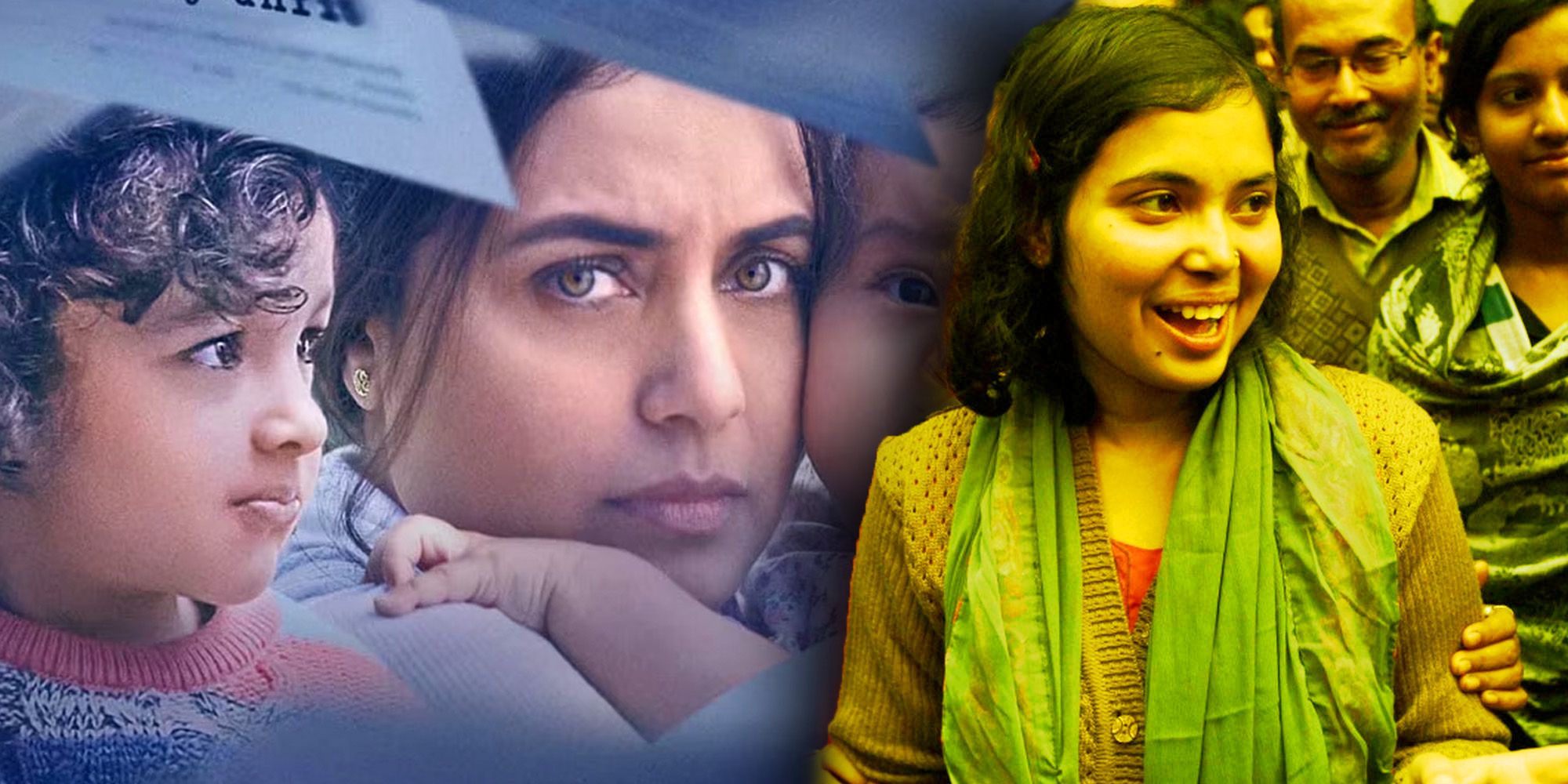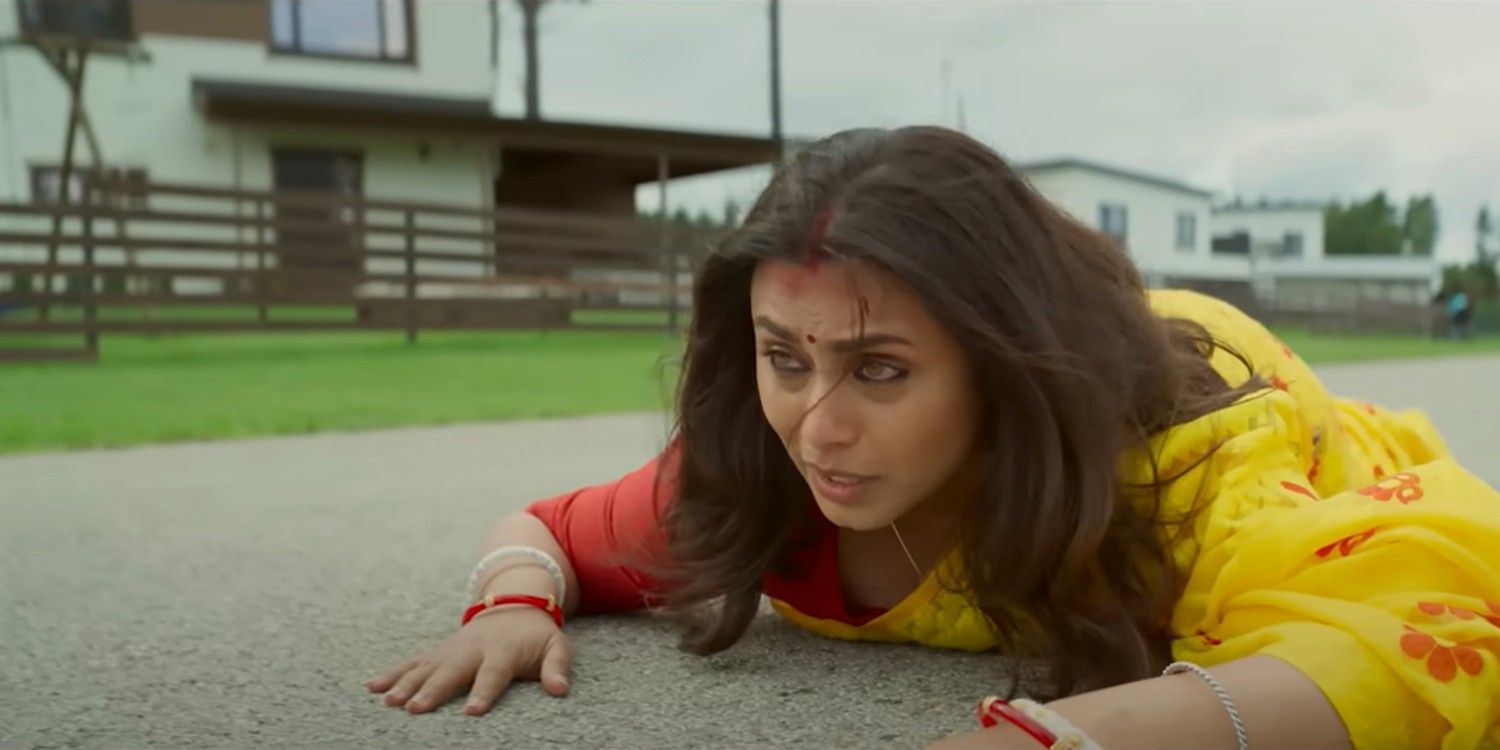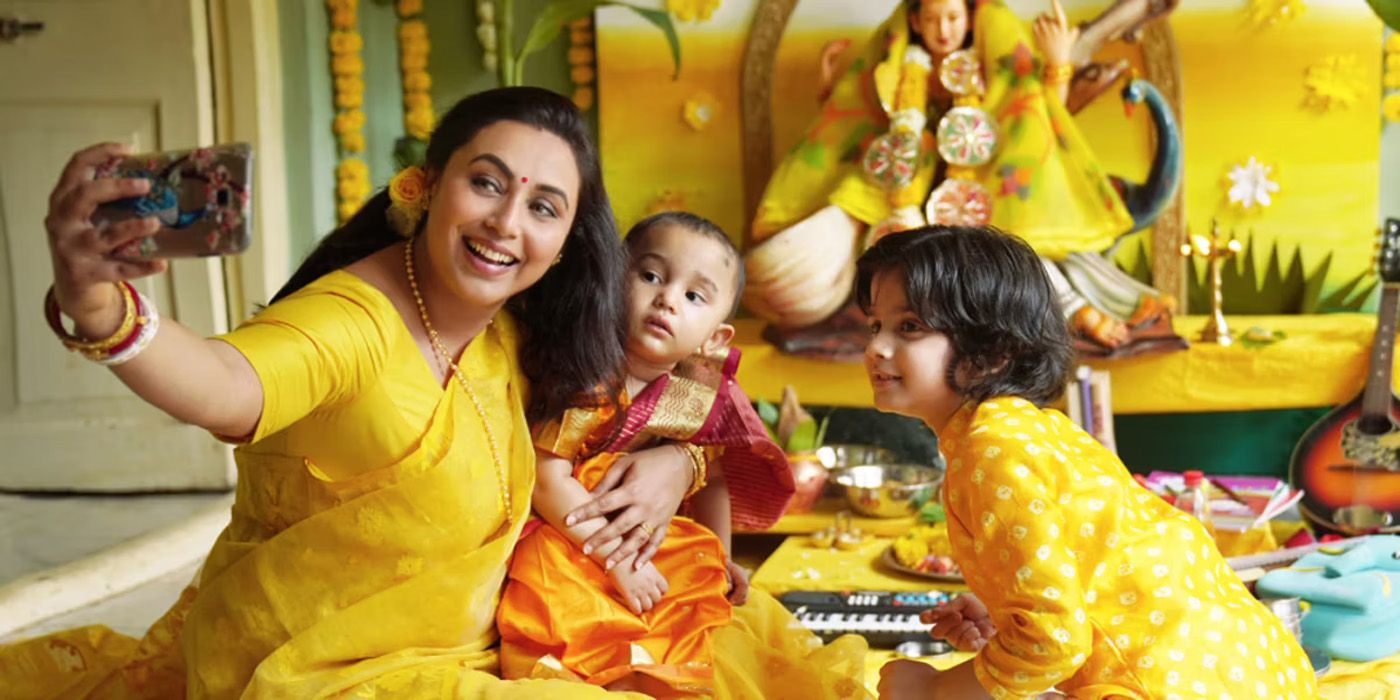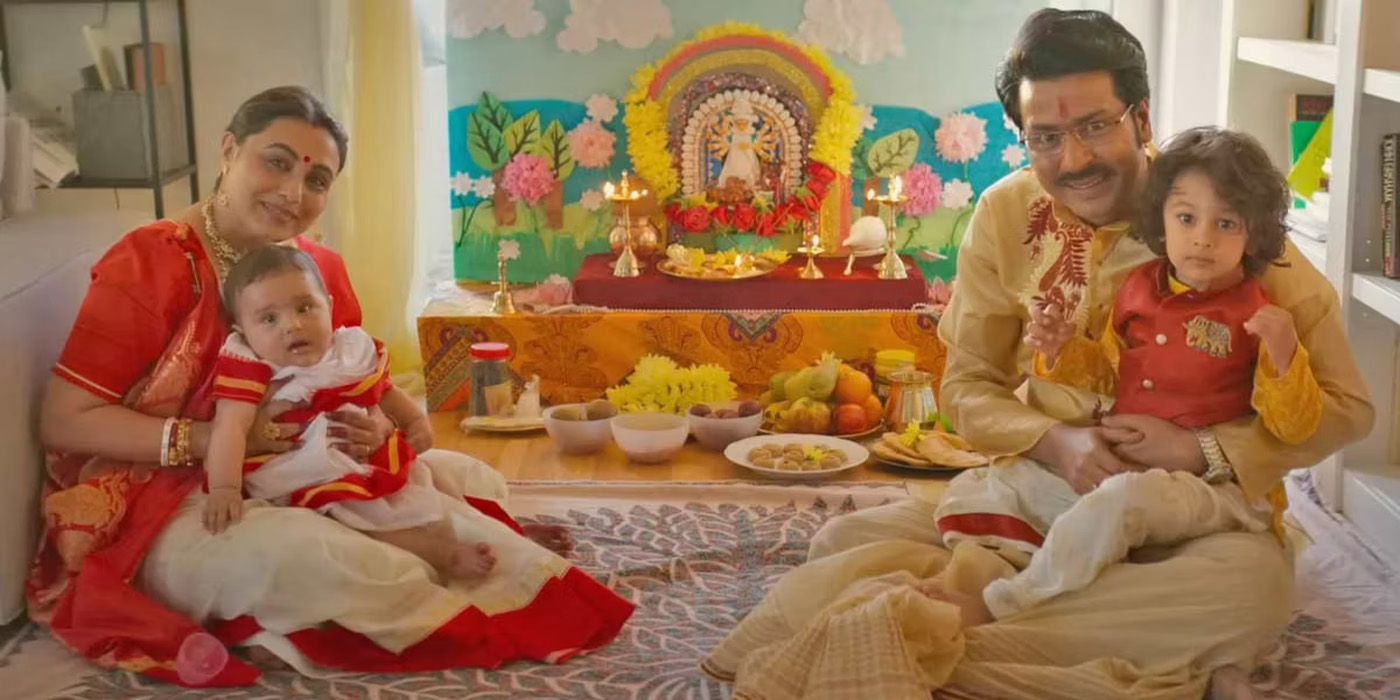Summary
- The film Mrs. Chatterjee Vs. Norway depicts cultural differences as the main reason behind the custody battle, but it fails to examine the real allegations of abuse made against the mother.
- The real Mrs. Chatterjee faced an abusive marriage in addition to the custody battle, but the film only hints at this without exploring it further.
- The portrayal of Norwegian Child Welfare Services agents in the film as antagonistic and evil is exaggerated, as they follow strict protocols and conduct interviews before taking action.
Mrs. Chatterjee Vs. Norway is based on the true story of Sagarika Chakraborty's fight to regain custody of her two young children from Child Welfare Services in Stavanger, Norway, but the film has made some sizable changes to the real story. The film is directed by Ashima Chibber and stars Rani Mukerii as Chakraborty's stand-in Debika Chatterjee, with events loosely based on Chakraborty's autobiographical novel entitled The Journey of a Mother, in which the mother recounts losing custody of her two children to the Norwegian government in 2011 after moving to Norway to be with her husband Anurup Bhattacharya.
The CWS, or Barnevernet, had reason to believe that the real couple in Mrs. Chatterjee Vs. Norway was abusing their children, and after they were taken and placed in foster care, Chakraborty's fight to regain custody became a diplomatic row and an international incident because her children were Indian citizens. Having never ventured out of India other than to join her husband in their new home, she faced a significant culture shock, and cultural differences were perceived as much worse offenses. Still, the struggle of one young mother in a foreign country that led to a legal battle with the Norwegian government features melodramatic storytelling at the expense of objectivity.

30 Best Movies On Netflix Right Now (April 2024)
From Marriage Story to Dune and They Cloned Tyrone, here are our picks for the best movies on Netflix for everyone to enjoy this month.Stream Mrs. Chatterjee Vs. Norway On Netflix
5 The Case Wasn’t Just About Culture Clash
Other Factors Played A Part
In Mrs. Chatterjee vs. Norway things like co-sleeping between parents and children, and parents feeding their children by hand are shown as bizarre to Norwegians, but the case levied against the real Mrs. Chatterjee, Chakraborty, was about more than a clash of cultures. There is very little attempt to scrutinize Indian culture in the film, but the Norwegian laws in place investigating these aspects of familial life were done so out of an assessment of physical abuse due to possible suffocation of infants during sleep, and matters of hygiene. It wasn’t a simple case of Norway not allowing certain customs because they were Indian.
According to an Op-Ed letter from Ambassador Hans Jacob Frydenlund in The Indian Express which highlights the perspective of the Norwegian Embassy,
"Children will never be taken away from their families based on cultural differences described. Eating with their hands or having children sleeping in bed with their parents are not considered practices harmful to children and are not uncommon in Norway, irrespective of cultural background."
Though there are 20,000 Indians currently living in Norway without intervention from CWS, the film leaves out the fact that the Barnevernet exists to aid all children in Norway under duress regardless of their ethnic background.
4 The Real Mrs. Chatterjee Was In An Abusive Marriage
It's Only Hinted At In The Movie
After joining her geophysicist husband in Norway, Mrs. Chatterjee has to navigate a new culture while at the same time fielding the demands of her own, trapped in an abusive marriage. Not only does her husband abuse her, but also her brother-in-law, Arunabhas Bhattacharya, and while this is hinted at in the movie, it's never fleshed out. In reality, no sooner had she fought to get her children back than another huge battle loomed between her husband and his family, which, if included in the film, would have made an even more powerful statement.
Chakraborty described the abusive marriage that necessitated a separation after the events of Mrs. Chatterjee vs. Norway. She risked her life to get her children back from the Norwegian government and found even more obstacles at home in India (via First Post).
"I had an arranged marriage ... from the very beginning my in-laws and my husband treated me badly. They used to pull my hair, beat me with a belt and lock me up in the bathroom. My brother-in-law once had beaten me up with a belt for hours and even grabbed me by my hair, tore my dress, and tried to physically abuse me."
3 The Real Mrs. Chatterjee’s Eldest Child Was Autistic
The Child Was Hit Instead Of Any Kind Of Therapy
The same interview with First Post touches on the fact that, after the couple moved to Norway, the real Mrs. Chatterjee gave birth to her first child, a boy named Abhigyaan, who turned out to be autistic. Neurodivergence doesn't get touched on in the film, but Norwegian authorities maintain that video records showcase the real Mrs. Chatterjee striking her son. Suffering from loneliness and isolation in a new country, she was suspected of striking him versus getting therapy, either for him or for herself.
Because neurodivergence is handled differently on a global scale, its discussion becomes important given the cultural context of the film and the possible stress his diagnosis caused for the family. Allegations of her hitting him out of frustration prompted a swift response from the Norwegian CWS. If they observed things like Chakraborty allowing her children to play with kitchen utensils unattended, which she describes in her novel, Abhigyaan could have been in danger and had a different way of communicating fear.
2 There Was More Suspected Abuse Than In Mrs. Chatterjee Vs Norway
A Lot Of it Was Between Mother And Child
Mrs. Chatterjee vs Norway highlights cultural differences and a callous Norwegian government being at the heart of the case, but given the Op-Ed from the Norwegian Ambassador to India, these alone couldn't account for the children being placed with another family. The movie glosses over the fact that, in reality, there were allegations of abuse that went beyond perceived cultural differences, particularly between mother and child.
The film had the chance to inspect and explore not only any fissures in Norwegian law as it pertains to child protection, but also the quid pro quo relationship between Indian parents and their children. There is no examination of whether the real Mrs. Chatterjee was right in disciplining her children to such a degree, and the film does an admirable job of juxtaposing her parenting style with that of a Norwegian foster family. She is only depicted as a martyr without acknowledging what hand she had in her children's plight.
1 The Norwegian CWS Agents Were More Professional
They're Very Antagonistic In The Film
In the film, government officials aren't treated particularly objectively, with everything from checkpoints involving Swiss guards to the Norwegian CWS agents being reduced to mustache-twirling villains. The CWS agents, in particular, are portrayed as evil and incompetent, when in reality Norwegian laws are quite strict about protocol for a reason. Agents must meet with parents and conduct interviews, not make off with their children like thieves in the night.
As the real Mrs. Chatterjee explained, “Initially when I had enrolled my children in a kindergarten school in Norway, I spoke to them about sending help at home. Instead they sent two women from the Child Welfare Centre of Norway whom I thought probably came to help me out. But that wasn’t their intention. They wanted to actually kidnap my children from me." As with the rest of the case, the issue presented in Mrs. Chatterjee Vs. Norway isn't that black and white, and her dealings with the agents weren't as simple as them posing as "help" only to gain access to her home and then kidnap her children.





